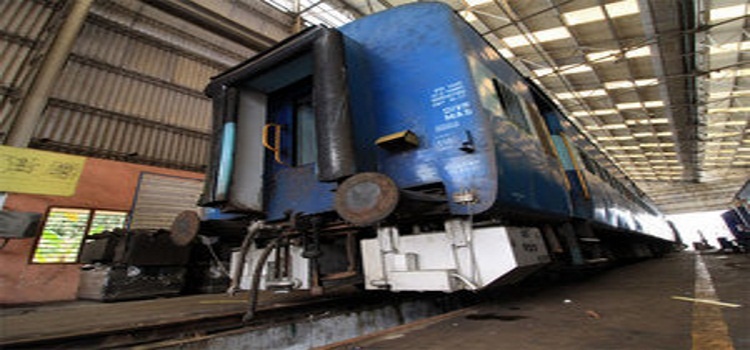
However, sanitation experts and various studies — including those commissioned by the railways — have pointed out that most of the new “bio-toilets” are ineffective or ill maintained and the water discharged is no better than raw sewage.

However, sanitation experts and various studies — including those commissioned by the railways — have pointed out that most of the new “bio-toilets” are ineffective or ill maintained and the water discharged is no better than raw sewage.
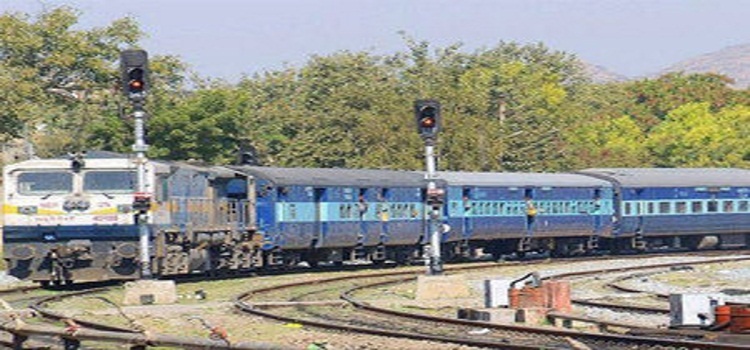
With the likely upfront receipts of Rs 30,000 crore, the Indian Railways will take on projects that deliver higher returns.
“The O&M will be handled by our engineers. The funds raised through this sale will be utilised in projects that have a return of more than 12%,” a top railway official said.
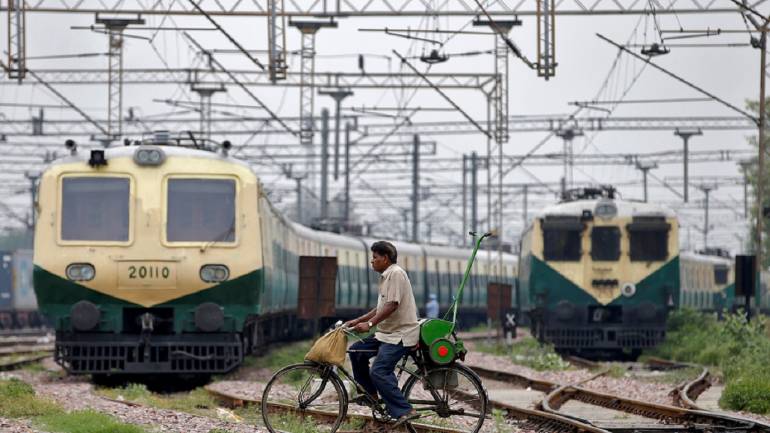
Railway Minister Piyush Goyal today met José María Oriol, the CEO of Talgo, who offered to build the light-weight, energy efficient Spanish Talgo trains in the country under the ‘Make in India’ initiative, ministry officials said.
The meeting is significant as the project to introduce these trains has been in cold storage since the Indian Railways conducted trials last year to validate their speed potential.
Sources say that during the meeting Oriol told Goyal that the company was open to “everything” – from manufacturing the coaches to entire train sets in India.
The minister was assured that the company supported the government’s Make in India campaign and “risked coming to India at their own cost” because they wanted to “manufacture” in the country, a ministry official said.
During the trial run in September last year, the train clocked a top speed of 180 km per hour and completed the 1,384 kilometre journey between New Delhi and Mumbai in 11 hours and 40 minutes, compared to the 15 hours and 50 minutes taken by the Rajdhani Express.
What made Talgo trains attractive for Indian Railways was the fact that it can be deployed on existing tracks. The lightweight design and advanced suspension technology allows Talgo trains to travel faster, minimises risks of accidents and puts less force on existing tracks during high-speed manoeuvre.
While the average speed of Rajdhani and Shatabdi coaches is around 70 kmph, Talgo trains can run at an average speed of 105 kmph on the same tracks.
The successful trial of Talgo trains was even highlighted in the list of the NDA government’s achievements in its first two years.
However, a question mark hangs over the fate of the project after the Indo-Spanish joint statement issued after Prime Minister Narendra Modi’s visit to Spain in May this year did not mention it.
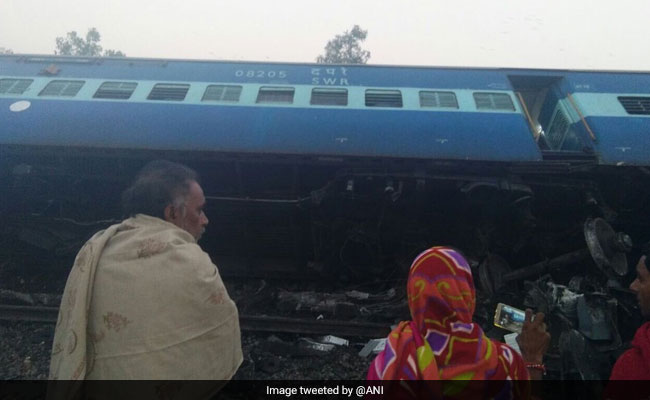
Three people were killed and at least nine nine persons left injured after a Patna-bound train derailed near Manikpur railway station in Uttar Pradesh early this morning, police said. Thirteen coaches of the Vasco Da Gama-Patna Express derailed at 4.18 am after it left the Manikpur station, less than 12 hours after a Bolero jeep collided with a passenger train near Lucknow killing four and injuring two.
Railway Minister Piyush Goyal has ordered an inquiry into the incident and announced a compensation of Rs. 5 lakh each to the family of the dead, Rs. 1 lakh for those with grevious injuries and Rs. 50,000 for the injured. “Immediate rescue and relief operations started and an inquiry ordered into the derailment of Vasco Da Gama-Patna Express at Manikpur, UP. My sincere condolences to the families of the deceased,” Mr Goyal said in a tweet.
Chitrakoot Superintendent of Police Pratap Gopendra Singh said a man and his six-year-old son from Bettiah district of Bihar died on the spot while the third person died at a hospital. Two of the injured are said to be serious.
Anil Saxena, Railway spokesperson, said medical relief is being provided to the injured. “Patients have been admitted to Manikpur and Chitrakoot Hospital and Railway Minister Piyush Goyal has been closely monitoring the situation. Ashwani Lohani, railway board chairman, has been asked to rush to the spot,” he said.
Railway officials are on the spot and investigating the reasons that led to the accident. According to Additional Director General (Law and Order), Anand Kumar, fractured railway track could have derailed the coaches. The incident has disrupted the movement of trains on the Patna-Allahabad route.
Exactly a year ago, over 100 people were killed and nearly 200 injured when 14 coaches of the Indore-Patna Express jumped the rails near Kanpur. The number of deaths due to train accidents has already reached over 200 this year, the highest in a decade.
Earlier in August, at least a dozen carriages of the Puri-Haridwar Utkal Express ran off the tracks in Uttar Pradesh’s Muzaffarnagar. At least 23 people were killed and more than 70 injured in the accident. A few days later, over hundred people were injured when 10 bogies of the Kaifiyat Express derailed in Auraiya district of the state.
Former Railway Board chairman AK Mittal had resigned taking responsibility for frequent train accidents. Ashwini Lohani, the former chairman of national carrier Air India, then replaced him as the new chief of the board. The then Railway Minister, Suresh Prabhu, had also offered to quit, but was told to wait by Prime Minister Narendra Modi.
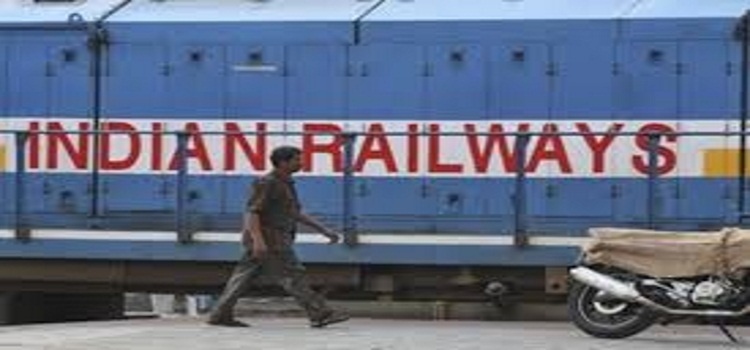
The railway ministry can now move a resolution in both Houses of Parliament adopting the Railway Convention Committee’s recommendations for a waiver on dividend for 2016-17. Cabinet approves Resolution for adoption of the recommendations of the Railway Convention Committee (2014) as contained in their Sixth Report on “Rate of Dividend payable by the Railways to the General Revenues for the year 2016-17 and other ancillary matters”
The Union Cabinet on Thursday cleared a proposal for a one-time waiver of Indian railways’ dividend payout of around Rs 9,000 crore to the general exchequer for 2016-17, purely as a one-time move, the Rate of Dividend payable by Railways to the General Revenues be waived off. With this, railways can now approach the Parliament for its approval to the waiver.
After the merger of the railway budget with general budget last year, it was decided that the national transporter would not have to pay dividend for the capital invested in it. While railways was budgeted to pay Rs 9,730 crore as dividend for last financial year, a subsidy of Rs 4,300 crore was claimed by it towards loss-making routes, putting the net dividend reportedly at about Rs 5,430 crore.
“Cabinet approves the proposal of the ministry of railways to move a resolution in both the houses of Parliament adopting Railway Convention Committee’s (2014) recommendations that for the year 2016-17, purely as a one-time move, the rate of dividend payable by the railways to the general revenues be waived off,” said the Press Information Bureau (PIB) on its Twitter handle.
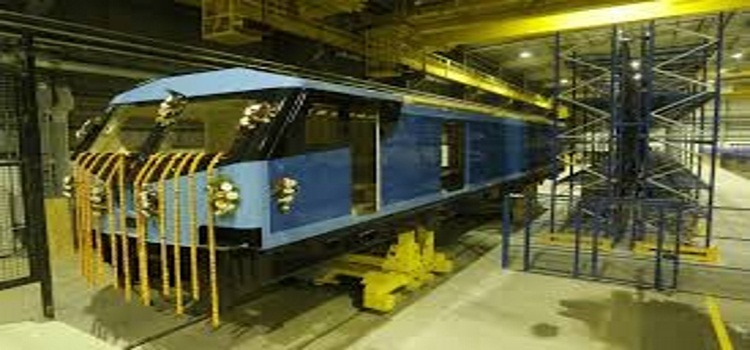
Artesyn Embedded Technologies, a global leader in highly reliable and available embedded computer systems, today announced a collaboration with Lab To Market Innovations Pvt Ltd, an Innovations development company incubated at the prestigious Indian Institute of Science, to bring the ControlSafe™ portfolio of rail computing platforms to the Indian railways market.
Artesyn’s ControlSafe portfolio includes the ControlSafe Platform, ControlSafe Expansion Box Platform, ControlSafe Carborne Platform and the ControlSafe Compact Carborne Platform. They are designed to enable rail system integrators to accelerate time-to-market and reduce the cost and risk of developing or upgrading train control and rail signaling applications. By leveraging a SIL4 COTS fail-safe and fault-tolerant computing platform, railway technology companies can focus on their value-added offering and final certification for end solutions.
“The ControlSafe portfolio is designed for a wide range of onboard and wayside applications and is already saving integrators years of time-to-market and millions in development costs all over the world,” said Qianqian Shao, product manager, Artesyn Embedded Technologies. “We have selected Lab To Market for its entrepreneurship and experience in the Indian market and this alliance will enable us to jointly tailor solutions for the next generation of India’s train control systems and signaling applications.”
“India has a world-renowned rail infrastructure carrying over 20 million passengers a day and a growing need for investment into dedicated freight networks,” said professor S.K. Sinha, founder and managing director of Lab to Market. “We have assembled a team of some of the best experts in transportation, electronics, embedded systems and business development, backed by the number one university in India for technology and research. Using the ControlSafe platform, with SIL4 certifications, will help us bring this much-needed infrastructure to reality more quickly, cost effectively and with a reliable development roadmap.”
The first three platforms in Artesyn’s ControlSafe portfolio have been certified to SIL4, while certification is planned for the latest platform to be announced, the ControlSafe Compact Carborne Platform.
About Lab To Market
Lab to Market’s main business is to develop and license products/solutions to industries with the active involvement of academia. Lab to Market is incubated at the Indian Institute of Science (IISc), Bangalore, and works closely with the faculty of this most prestigious institution, known world over for its world class facilities and research output. Our mission is to develop market-ready and commercially-viable products and solutions from the ‘proof of concept’ and ‘laboratory prototypes’ of academic institutions, research laboratories and similar others.
About Artesyn Embedded Technologies
Artesyn Embedded Technologies is a global leader in the design and manufacture of highly reliable power conversion and embedded computing solutions for a wide range of industries including communications, computing, consumer electronics, medical, military, aerospace and industrial automation. For more than 40 years, customers have trusted Artesyn to help them accelerate time-to-market and reduce risk with cost-effective advanced network computing and power conversion solutions. Headquartered in Tempe, Arizona, Artesyn has over 16,000 employees worldwide across ten engineering centers of excellence, four wholly-owned world-class manufacturing facilities, and global sales and support offices.
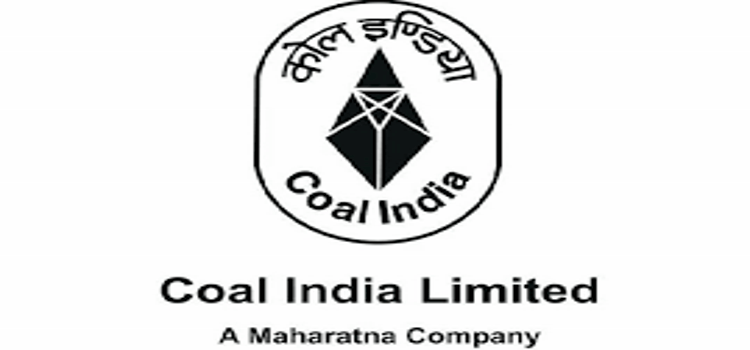
BHUBANESWAR: Diversion of coal rakes entitled for NTPC’s Simhadari plant from Mahanadi Coalfields Ltd (MCL), a subsidiary of Coal India Ltd (MCL) by NTPC management triggered shutdown of its 500 MW unit in Andhra Pradesh, an MCL release said.
NTPC management had continuously diverted coal rakes from MCL entitled for Simhadari STPS (super thermal power station) to the Korba STPS and Seepat TPS (thermal power station) which were running super-critical.
MCL has been regularly offering coal as per programme of NTPC Simhadari to South East Central Railway as well as East Coast Railways.
As on date, materialisation of Andhra Pradesh-based thermal power station has been 95 per cent of pro rata ACQ (Annual Contracted Quality) for the month and 79 per cent for annual pro rata ACQ.
Between November 11 and 14, 2017, MCL has dispatched an average of seven rakes to NTPC Simhadari (seven, six, nine and six rakes respectively), which has been more than the supply of 5.5 rakes per day to the plant, as per the decision of the sub-group of the Ministry of Coal.
MCL is committed to maintain continuous supply of coal to its consumers and with the cooperation of Railways, the company has been successful in checking the growing demand-supply gap in the country. On Tuesday, 73 rakes were provided by Railways to MCL for coal supply.
In the current quarter Q3, the supply of coal from MCL has crossed an average of 400,000 tonnes per day.
MCL has supplied about 82 million tonnes of coal to its consumers in the current fiscal and has sufficient stock to feed all power consumers, including NTPC Simhadri.
The company had crossed 141 million tonne supply of coal to consumers during 2016-17, which had been the highest supply ever by any coal company in the country.
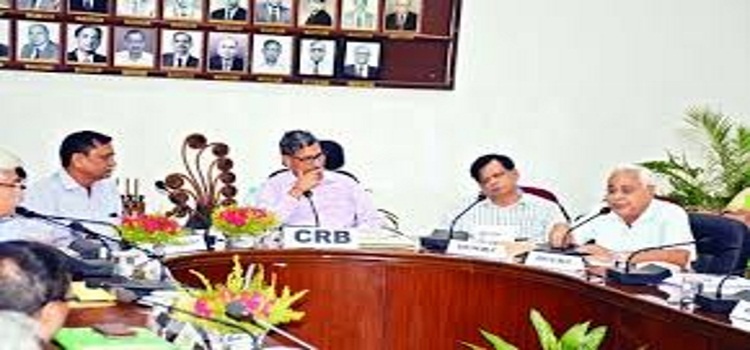
NEW DELHI: With nearly 500 projects worth Rs 4 lakh crore delayed, the railways has decided that no new project will be taken up from now on until states give written commitments regarding transfer of land. Delay in land acquisition is one of the major causes for new rail projects not taking off.
The decision was taken by Railway Board Chairman Ashwani Lohani following internal deliberations. The board has issued policy guidelines to all zonal headquarters authorising general managers (GMs) to invite tenders only if they are reasonably certain of the possibility of land acquisition within a reasonable time-frame.
“In suppression of all earlier instructions, Railway Board has decided that issue of tenders or commencement of physical work for New Line projects shall be taken up only after completion of land acquisition subject,” said the policy document issued on October 30.
The document says that GMs can also consider seeking a written assurance from the state governments in this regard. The idea is to put the onus on state governments for smooth transfer of land for railway projects.
“The problem of land acquisition comes in new line projects, majority of which are recommended by states. So, the new guidelines put the onus on states to provide the land if they want new projects to be sanctioned,” said a senior railway board officer.
According to official statistics, there are about 491 projects – new lines, gauge conversion and doubling — pending completion. Of these, 171 are new railway line projects worth Rs 2 lakh crore.
“For the purpose of execution, large projects can be divided into phases by GMs… after ensuring that each phase, on completion, yields commercial return for Railways,” the policy document added.
It has been decided that the policy will be followed not just in cases of new projects but also old ones where tenders have not yet been finalised. Under the earlier policy, tenders could be issued if 70 per cent of land was available for the projects. But according to railway sources, it was hardly followed.
The guidelines have been sent to all states so that they can initiate the procedures for facilitating land acquisition for railway projects.
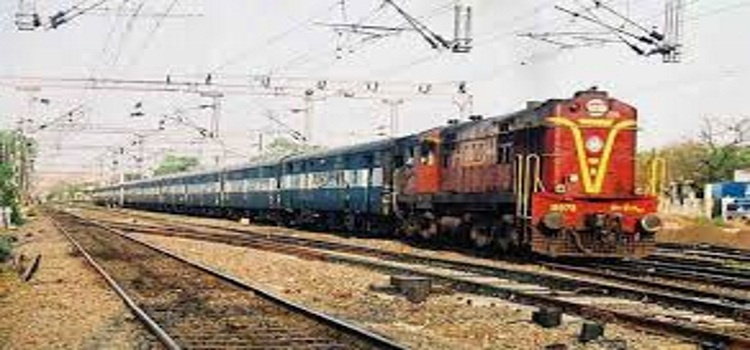
With growing cases of derailment in the past few months, the South Eastern Railway (SER), in a move to increase capacity and ensure the safer running of trains, has replaced the route relay interlocking (RRI) system at Kharagpur with Asia’s largest solid state interlocking (SSI) system. This technology that is set to come into effect from Sunday will allow station masters at Kharagpur to set 800 different routes for trains in a matter of a few clicks.
This is in stark contrast to the vintage RRI system which only allowed operators to set a mere 423 routes.
Principal Chief Operations Manager of SER, Suchitto Kumar Das said, “This will be Asia’s largest SSI system. The RRI system is of pre-1980 vintage and has crossed its codal-life.”
The cost of installing the new system is a whopping Rs 39 crore. This new technology will allow the path of a train to be set in a way that it has to cross several tracks.
The prime benefit of the interlocking system is that it ensures no cross movement takes place during the crossings, to avoid disastrous collisions.
“The SSI system is much more dependable than the older ones. We have been carrying out tests on this system for the last 7-8 months,” said Das.
The project that was kick-started at the Kharagpur yard on November 4 will continue its work, till Sunday. It is likely, that passengers may face severe disruptions in the suburban rail services from Friday, once the SER begins to switch over to the SSI system from its current RRI system.
During the work, the SER will make platform numbers 7 and 8 at Kharagpur operational. To increase capacity, it will also link a third line from Howrah and a second line from Midnapore to the Kharagpur yard by Sunday.
As per SER’s Chief passenger transportation manager, Soumitra Majumdar, over 116 pairs of trains originate, terminate or pass through Kharagpur every day.
With the dawn of the new technology in place, three signal cabins will become inessential, and the requirement for cabin masters will decrease.
“We’ll require more station masters to operate the system. Some trains may be delayed, but we don’t anticipate any major trouble after Sunday,” he told.

The trend of optimisation has spanned beyond the fields of electronics, technology and media, reaching key verticals in the transportation sector such as the railways. With the evolution of sensors and wireless connectivity, remote management of railways is becoming more accurate. Railways management systems are being developed on a range of new technologies that can potentially augment the operational performance of railways administration.
Considering how railways will remain to be the backbone of logistics, infrastructure, and the overall economy of a country, administrative authorities are expected to adopt railways management systems for bolstering this commodity. According to Future Market Insights, the global market railways management systems in anticipated to gain traction in terms of revenues over the period of next five years.
During this forecast period (2017-2022), advent of new and improved technologies and subsystems will continue to transform the efficiency of railways management systems. The report projects that by the end of 2022, the global market for railways management system will be worth nearly US$ 5 billion.
According to the report, North America is anticipated to represent the largest market for railways management systems. Robust railway infrastructure in the US, increasing interests of North American railway administration towards adoption of advanced technologies, and extended railway budgets will continue to factor the soaring adoption of railways management systems in this region through 2022.
Traffic planning solutions to make headway through 2022
On the basis of solutions facilitated through railways management systems & subsystems, the global market is anticipated to witness higher demand for traffic planning solutions. In 2017, close to one-third of revenues procured in the global railways management system market are anticipated to be accrued from the adoption of traffic planning solutions.
Advanced traffic management systems for railways are expected to enable local administration adapt to the changing traffic patterns of regional railways. Management and planning of narrow track traffic will continue to be a key concern for railways administration, especially in metropolitan environments.
Primarily, railway administrations are adopting fully-integrated railways management systems built around the operational plan of local, interstate and regional railways. The report further projects that adoption of track management systems will witness robust traction over the foreseeable future. These solutions are expected to provide better efficiency in management of high speed and conventional speed trains, as well as their long-hauling rolling stocks.
The demand for operation management systems is also expected to soar in the view of increasing incidence of train collisions due to operational flaws. By 2022-end, operation management systems sold across the globe are likely to bring in over US$ 1.1 billion in revenues.
Cloud deployment of railways management system to register highest CAGR
On-premise deployment of railways management system is anticipated to bring in nearly US$ 2 billion in global revenues by the end of 2017. In the approaching years, however, several railway administrations across the globe are likely to deploy railways management system through cloud-based networking models.
For improving compliance of railways management systems across integrated platforms, cloud deployment will be viewed as the best option. Moreover, real-time management and active notification systems will be working more effectively through cloud deployment of railways management systems. Through 2022, global revenues procured from cloud deployment of railways management systems are anticipated to register highest CAGR of 13.2%.
Tracking the competitors in global railways management system market
The report observes that companies namely, Hitachi, Ltd., Cisco Systems, Inc., IBM Corporation, ABB Limited, Thales S.A., General Electric Co., Toshiba Corporation, Huawei Technologies Co., Ltd., GAO RFID, and Amadeus IT Group, S.A will remain active in expansion of global railways management systems market through 2022.
Key developers of railways management systems are expected to focus on full integration and adoption of advanced sensors & monitoring tools. These companies will be compelled to offer comprehensive railways management systems, ones that adapt to every kind of railway traffic density, and across underground lines and conventional railways.
About Future Market Insights: Future Market Insights is the premier provider of market intelligence and consulting services, serving clients in over 150 countries. FMI is headquartered in London, the global financial capital, and has delivery centres in the U.S. and India.
FMI’s research and consulting services help businesses around the globe navigate the challenges in a rapidly evolving marketplace with confidence and clarity. Our customised and syndicated market research reports deliver actionable insights that drive sustainable growth. We continuously track emerging trends and events in a broad range of end industries to ensure our clients prepare for the evolving needs of their consumers.
FMI’s team of over 200 research analysts provides market intelligence at global, regional, and country level. Our analysts are committed to provide independent insights, relying on our cognitive defusion training module, which conditions them to look at data objectively and unbiasedly.